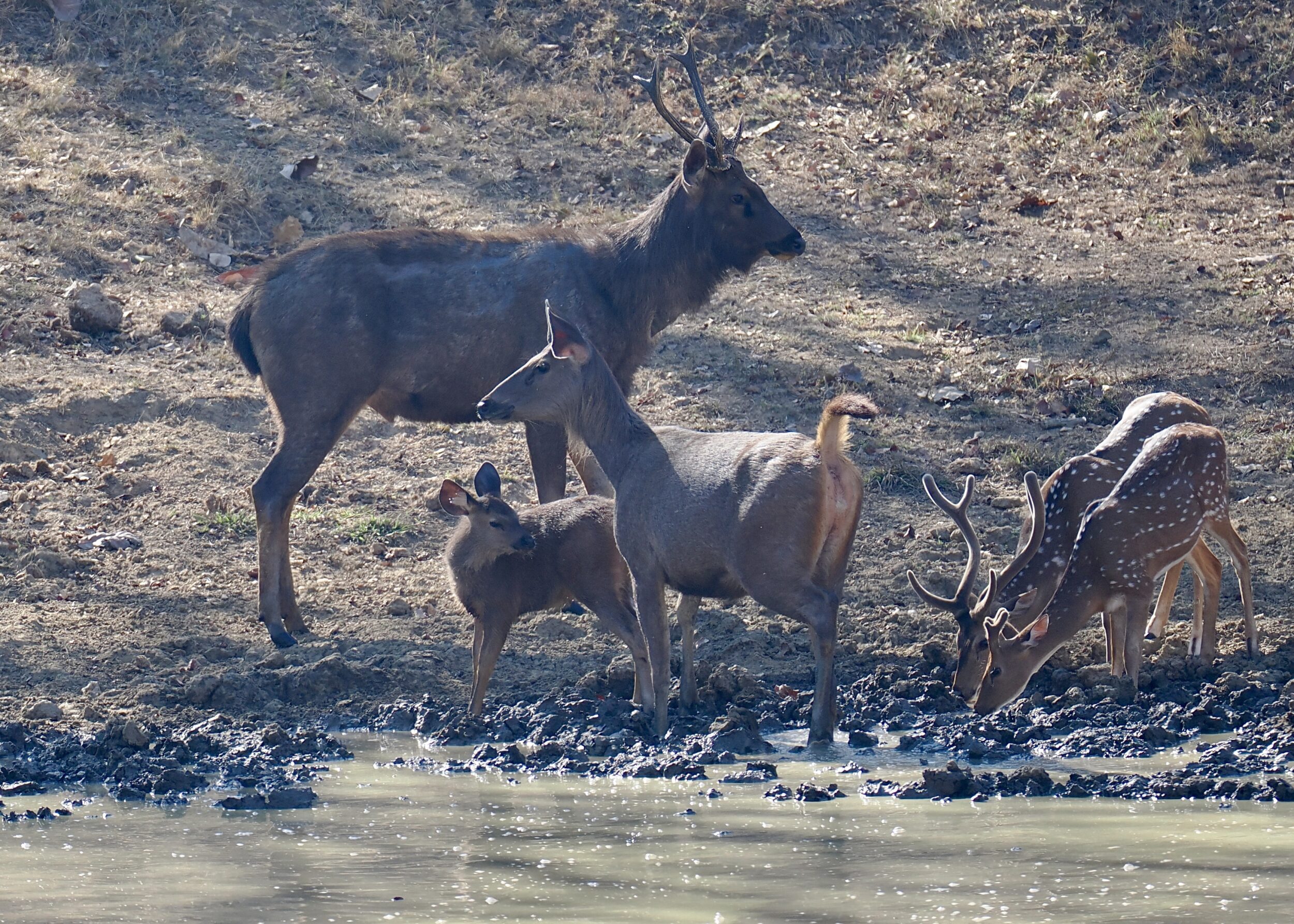Imagine an English-speaking tiger, asked to describe the deer in this post’s featured image.
”Delicious”, might be the tiger’s reply.
You are looking at #1 and #2 on the list of species most preyed on by India’s tigers – respectively, sambar and chital/spotted deer.
As you can see, all five deer are definitely not relaxed.
Drinking and having “a good look around” are not simultaneously-possible; the pictured chital are in “eyes down” mode.
The sambar calf is looking at its mother.
However, you can see that the ears of all five deer are open, alert.
If you wish to see tigers (or leopards) in the wild, your ears are your most useful organs.
Big cats’ hunting success is stealth-dependent; they are highly unlikely to make sounds that betray their presence.
Your very quiet self should be focused on hearing the alarm calls which “prey” animals make whenever they notice a predator.
In most respects, a tiger’s eyes, nose and ears are much more acute than are any human’s.
In any Indian National Park/ Tiger Reserve, a wild tiger roams “freely” through the forests.
A tourist human, however, must remain within an approved vehicle which is not permitted to go off-road.
How to waste a lot of fuel, raise a lot of dust, and see very little: keep “safari” vehicle in constant motion, with all occupants’ eyes wide open…until someone spots a tiger.
How to have a much better chance of seeing a tiger or a leopard: stop vehicle often, stay quiet, listen…and look at/for everything that breathes.
Even if this method fails to deliver you a face-to-face encounter with a big cat, it almost certainly will enable you to hear what happens when a tiger or leopard moves through the forest…and it certainly will enable you to see a great many other fascinating species, at close range.
Sambar alarm calls are reputedly the most “reliable”.
Alarmed chital are also often audible to attentive humans.
Either species will, of course, pay attention to the other’s alarm call, but both are more likely to “get the life-saving news” from other species.
At ground level in a forest, a prey animal is unlikely to enjoy a timely-enough view of its would-be murderer.
From above, however:
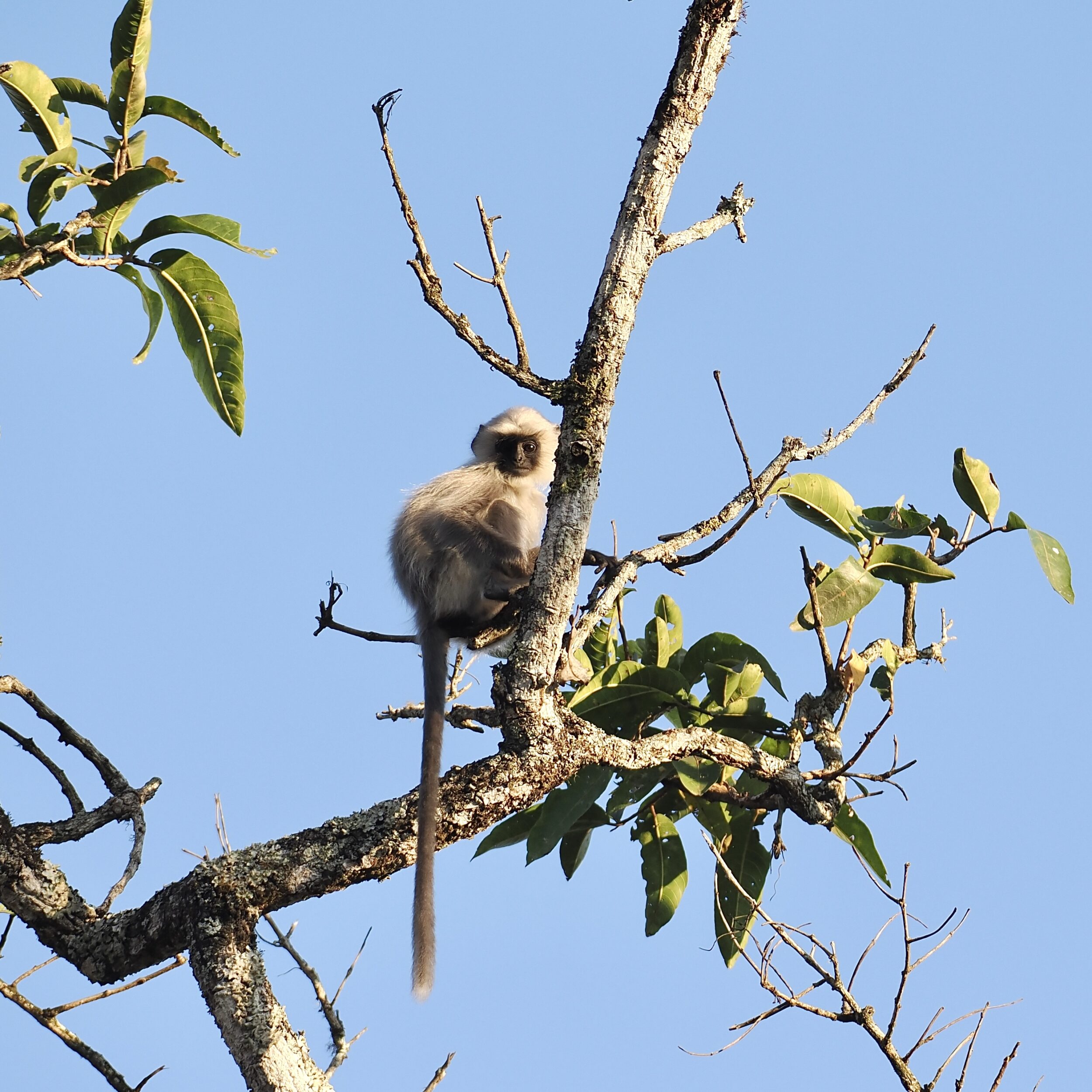
Many a deer owes its survival to the very loud alarm calls made by langurs.
So do wild boar, and some other animals’ young offspring…even, occasionally, an Indian elephant calf or a gaur calf. Adult male gaur are the world’s biggest “cattle”.
Langurs have two distinct alarm calls, because they are more especially terrified by a leopard’s presence. Prey animals on the ground below thereby know which of the two “big cats” poses an immediate threat.
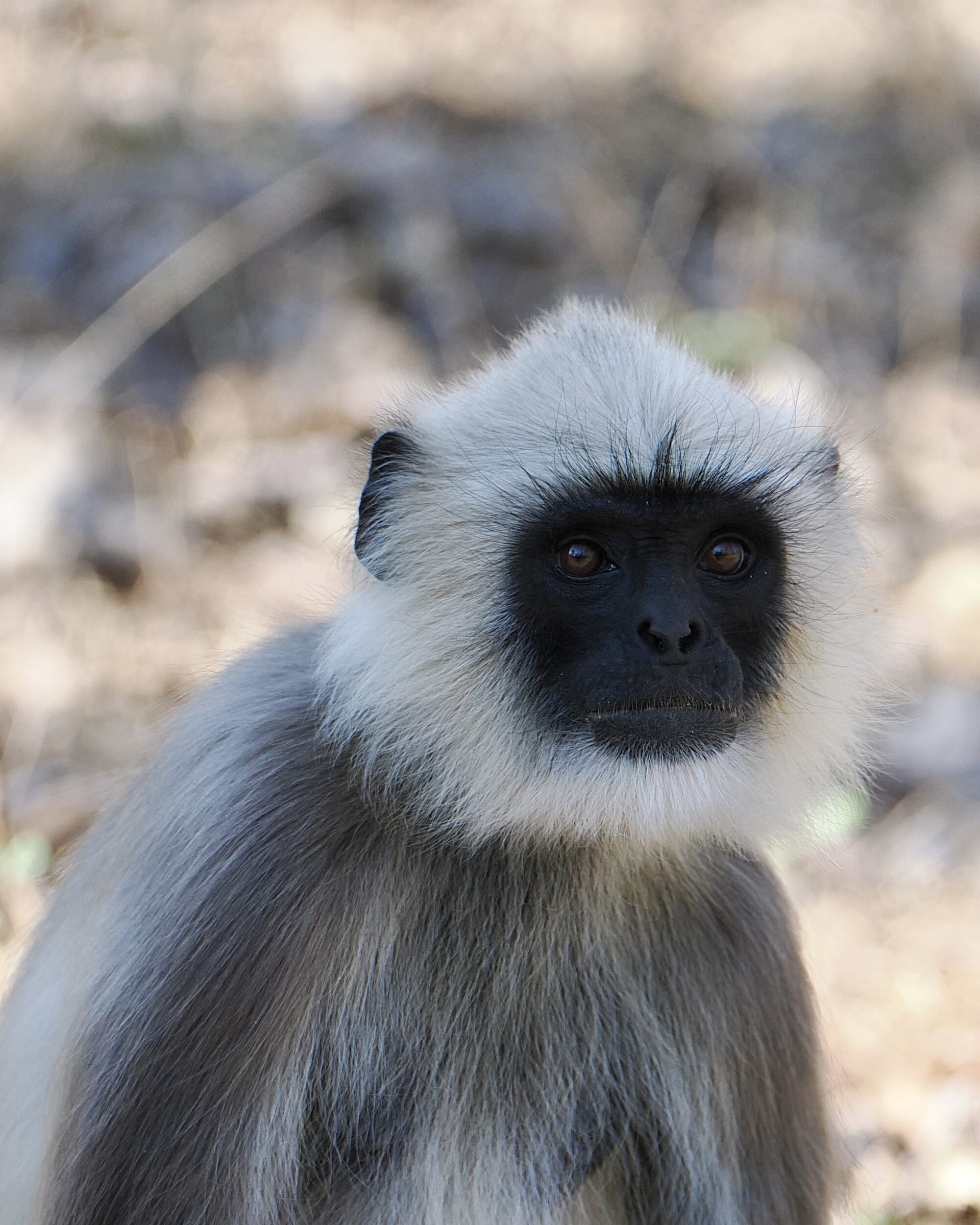
Like peacocks, langurs spend time “down below”, as well as “up above”.
Langurs are very sociable and agile; an individual on the ground is unlikely to be very far away from another individual, keeping watch from the forest canopy.
Peacocks are abundant in Nagarhole.
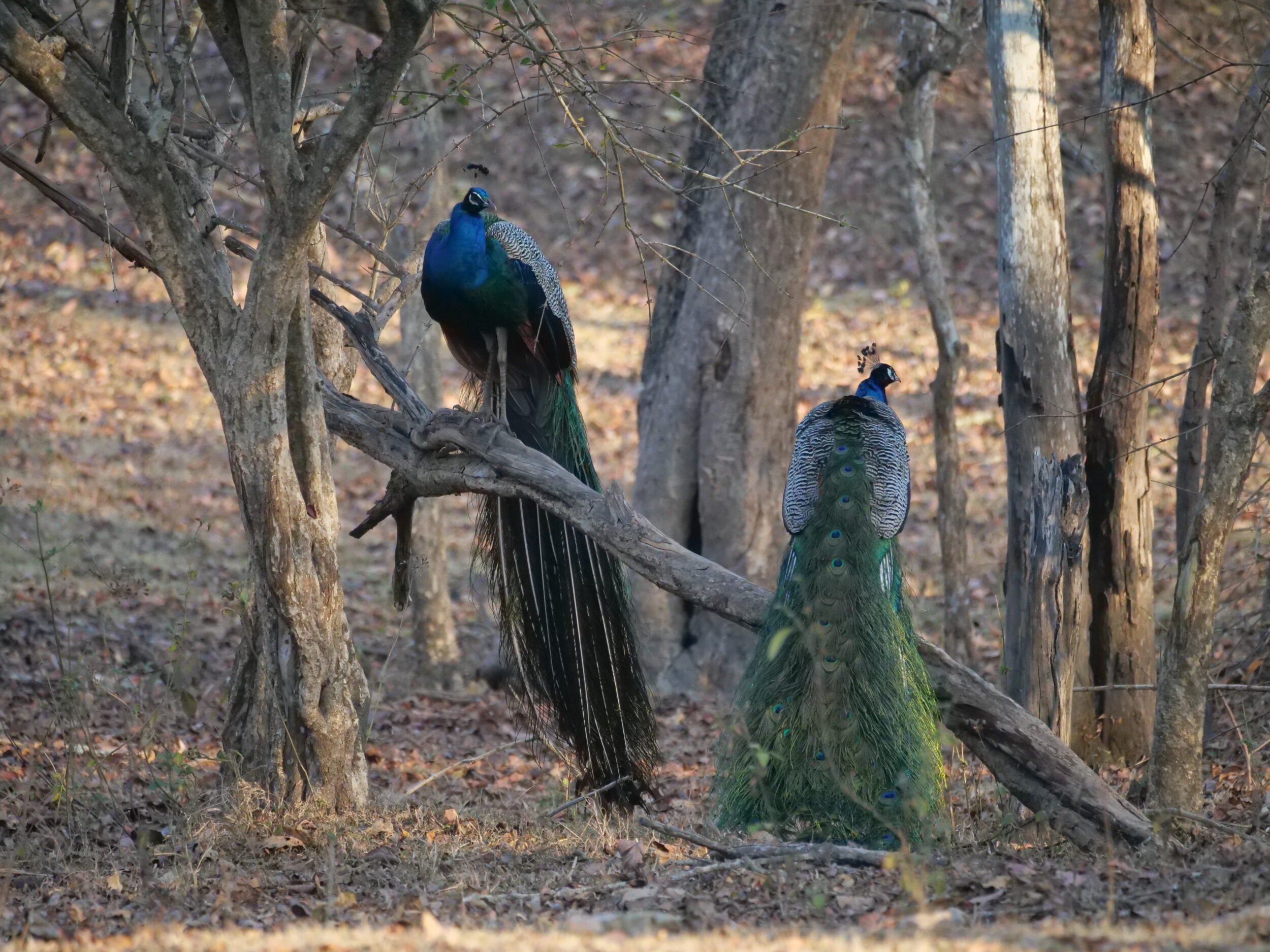
A peacock’s or peahen’s alarm call is really piercing; if one in a tree spots a leopard or tiger, everybody else in the vicinity will get the message!
Once “outed”, the relevant predator just might “get lucky”; the ensuing panic and confusion sometimes delivers the prey.
However, in most cases, the jig is up, and the tiger or leopard moves on, hoping to locate “unaware” prey animals, elsewhere.
More often than not, the “alarm system” works.
One round of alarm calls is often followed by another, no so far from the first.
Attentive listeners – be they prey animals, or tourists, or wildlife guides – can thereby gain a “picture” of the predator’s movement.
The tourists’ guide/driver now has a sense of where the tiger or leopard may be headed, where it could next cross a road, which particular waterhole is its most-likely next “target”…
The “lucky” prey animals are also usefully-informed.
To some creatures, however, a big cat’s proximity is neither alarming nor thrilling:
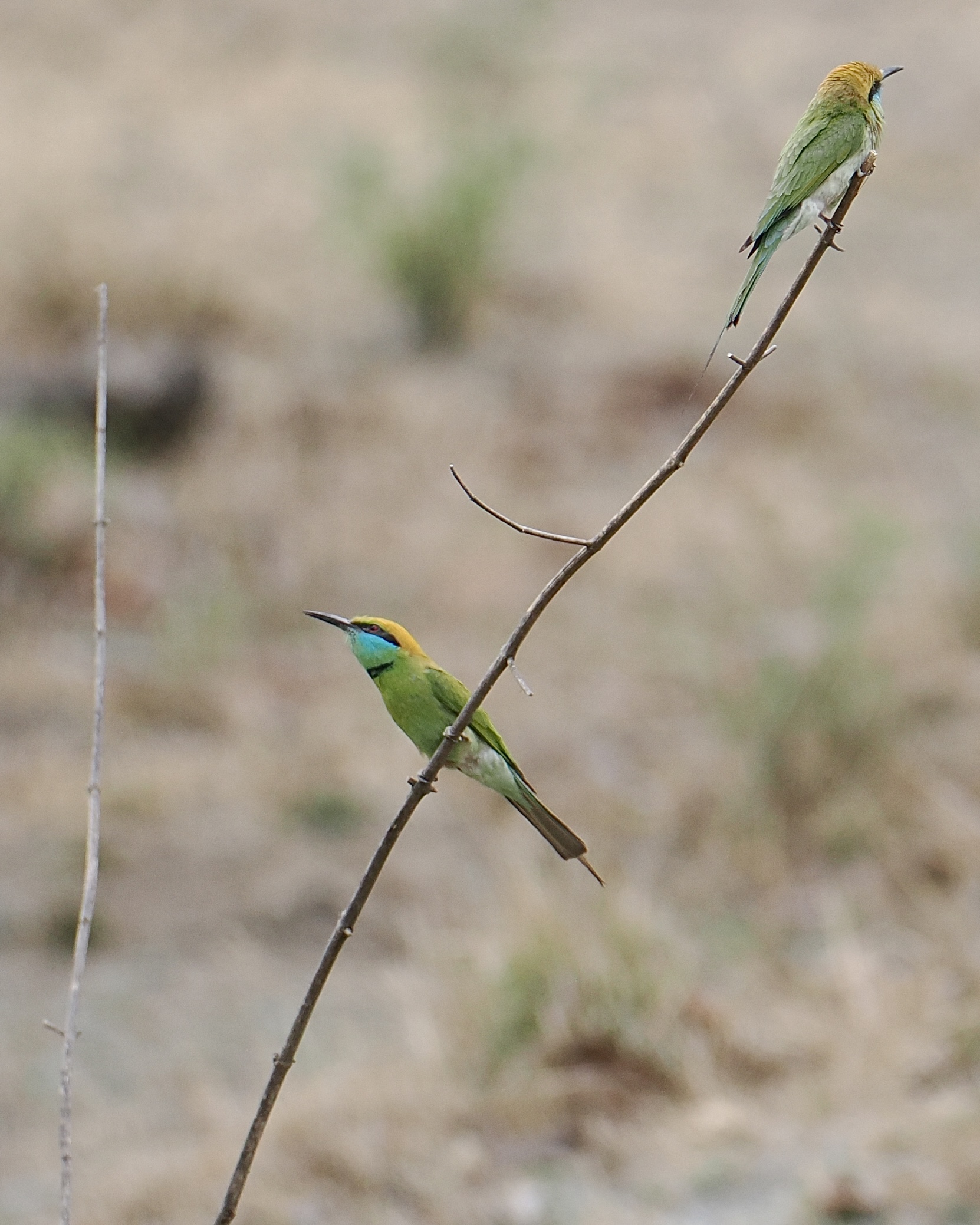
The above picture was taken during thirty magical minutes…for us, at least.
You can see the photographic evidence thereof in this trilogy’s final episode.
The nonchalant bee-eaters were even closer to the nearby tigress.
Meanwhile, you may enjoy a video which nicely illustrates this post’s thrust:
